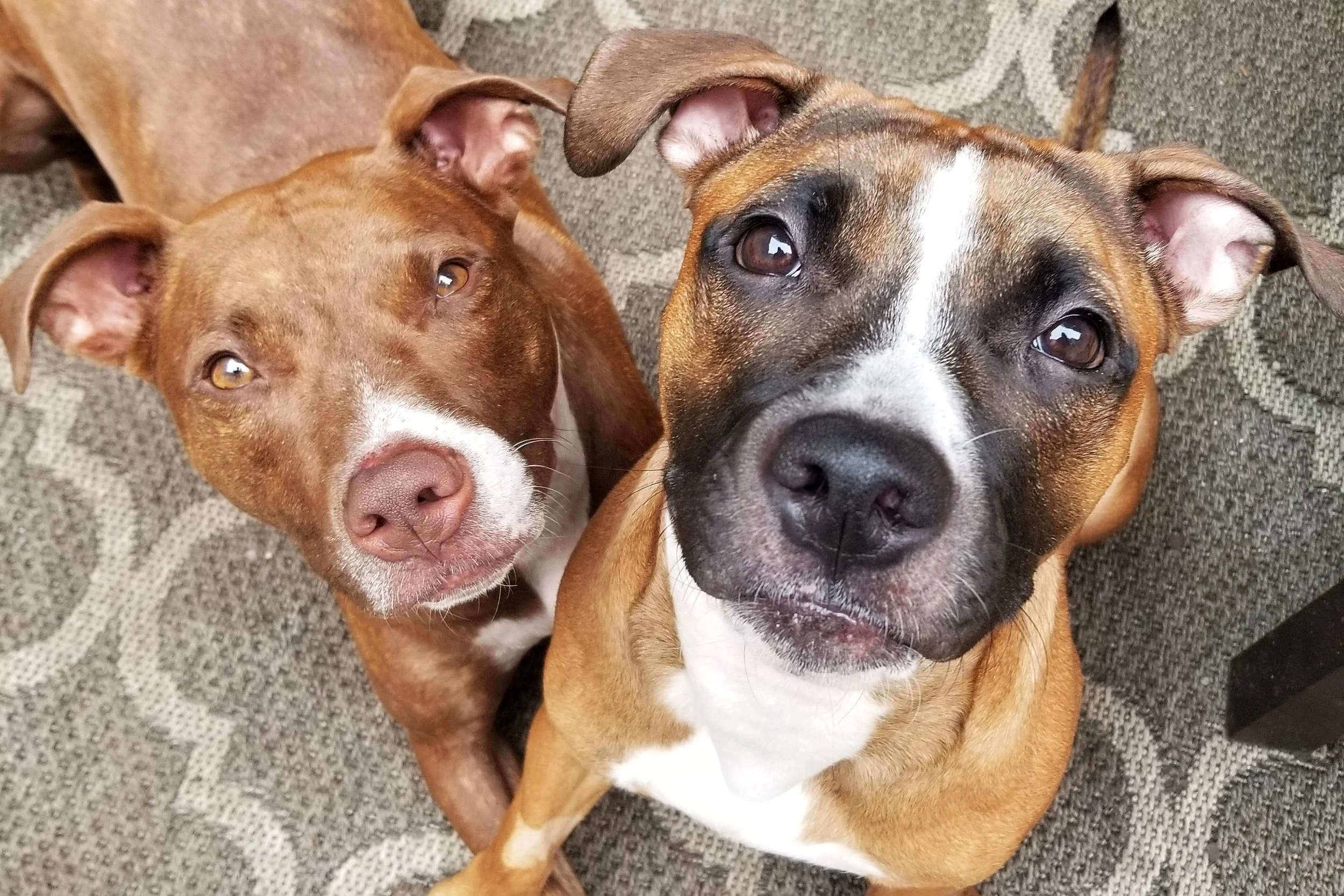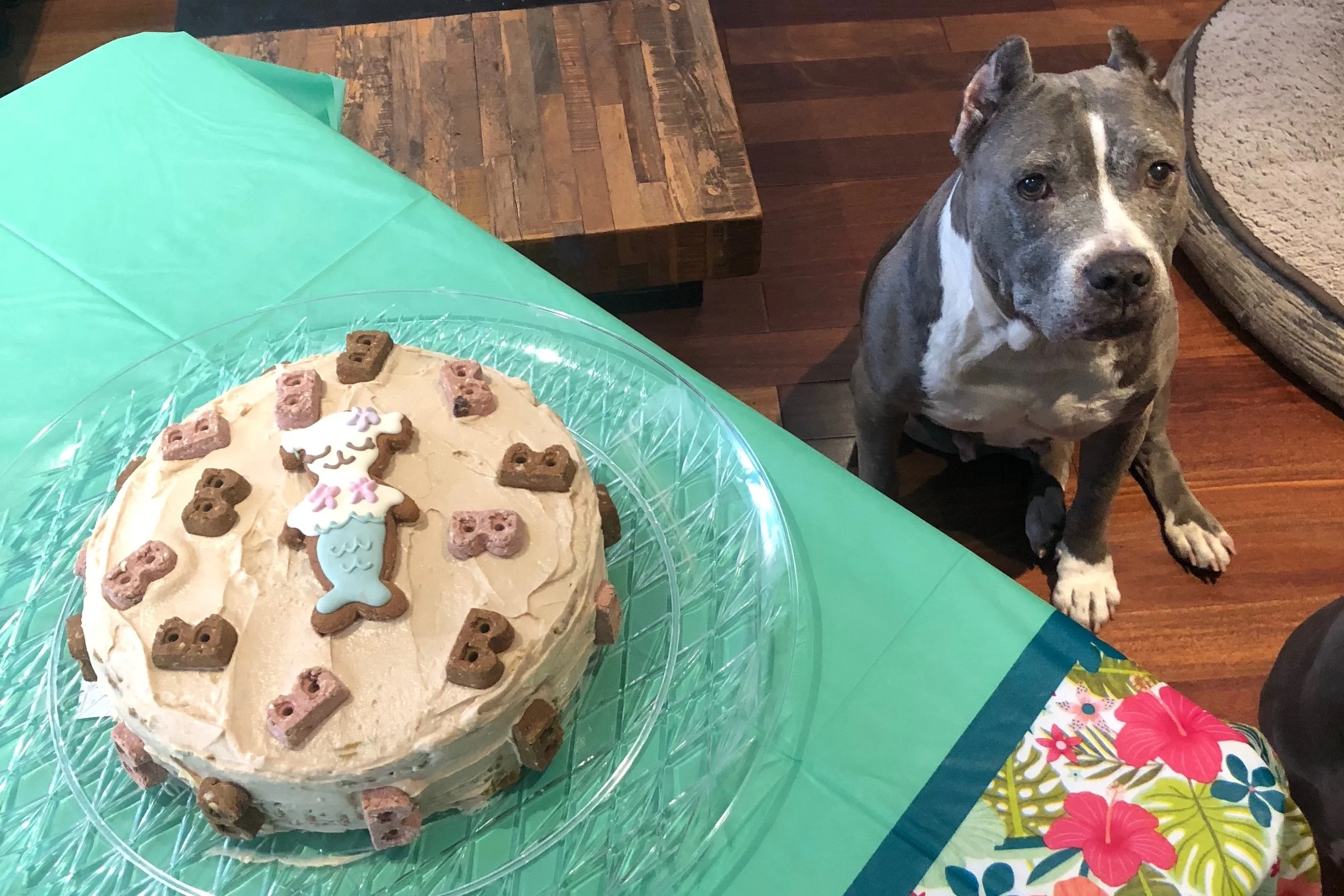Becoming a Foster
I still remember my first foster dog experience so clearly, even though it was nearly 4 years ago. I did almost everything wrong (by my own standards now). I committed to the first rescue that responded to my application and took on a 65 pound rottweiler mix without checking my building restrictions. I went to pick up the dog at a totally inconvenient location and time by myself in the middle of Brooklyn and paid for a rush hour cab home with the dog, even though I was unemployed and broke at the time. I had no crate, and tried to let the dog sleep in my bed with me (luckily she was too polite/her hips were too bad to jump up onto the bed). I tried to lift this big, terrified dog into the bathtub—luckily I was smart/experienced enough to go slowly and listen to her soft growls telling me she was uncomfortable (girlfriend did not get a real bath in the 2 weeks I had her). I left her alone and free roaming in my apartment, took her to the dog park, and did on leash meetings with tons of dogs. Basically, I did everything I now actively avoid as a foster.
Penny and former foster Charlotte
My next few fosters each taught me a valuable lesson. Foster #2 taught me about leash reactivity. Foster #3 taught me about the importance of crating so your stuff doesn't get destroyed/peed/shit on. Foster #4 taught me about resource guarding. And Foster #5 taught Eric how to listen to a dog's growls and take them seriously (still the only real bite we've had, knock on wood-from a 12 pound dog). Foster #6 was Penny, and she taught us pretty much everything else that can come up with a foster dog: separation anxiety, dog reactivity/need for slow intros, awful leash walking, prey drive, the importance of crating, slow feeding, basic training, stress pooping, and more.
Fostering is one of the coolest, most rewarding things you can do if you love dogs! It's not always easy to do, and it's certainly not easy to give them up. But it's so worth it! Here are some things I recommend if you're considering fostering for the first time, gathered over 4 years and 70+ dogs of hard-earned experience:
Figure out what kind of dog you can commit to and for how long
Here are some questions to ask yourself:
Does your building allow pets?
If no, you should probably wait until you move to start fostering. What are the restrictions (size, breed, etc.)?
What are the non-negotiable things for any dog in your home?
Ex. You need a dog/cat/kid friendly dog because you have a dog/cat/kid.
What are the things you'd prefer for any dog in your home?
Ex. You'd prefer house trained, lower energy, under 40 pounds. These things would be preferable, but they're not deal breakers (and often things like housebreaking are not known in the shelter!)
How long can you commit to the dog?
Some people can only give 2 weeks at a time due to work schedules. Others can commit longer. Even if you can only foster for a week, often that is helpful! Just make sure you're upfront and honest with the rescue about how long you can commit, and what a deal breaker would be (ex. if the dog is aggressive toward children that's a deal breaker because my neighbors kid comes over every week.)
Be aware that some rescues have a minimum day policy until they can move a dog if a foster isn't working out, so have a plan until they can find a new foster (ex. you'll crate the dog in a bedroom whenever the child is over until they find a new foster home).
former foster Alex and Penny (photo by @livelikepoh)
Find a rescue you like working with
Penny and former foster Willow photo by @prodigypuppy
Sometimes you won't know until you work with a few, and that's okay! Think about how long you'd want to foster for—some rescues adopt dogs out quickly and save more dogs, some take longer because they wait for the perfect home for each dog they commit to. Some let you be a part of the application process, some have a team that does it all and just lets you know the outcome. Some rescues are breed specific—if you LOVE dachshunds, there are doxie specific rescues! Some give fosters more supplies, some rely on fosters to provide what they can for the dogs. Some rescues give fosters priority to adopt their foster dog, others have different rules about that. It's okay to "shop around" and try out a few rescues to get a feel for who you jive with. Once you find someone you love working with, it's also okay to just stick with them! There's no right way to do it, only what's right for you.
Do some research
There are so many amazing resources out there on fostering. I recommend checking out Foster Dogs, ASPCA, The Humane Society, and more. Here are some tips for the first week:
former foster Pepe and Penny
Decompression is key. It's tempting to try to acclimate the new pup to your life as soon as he or she arrives. But many dogs are so stressed, they just aren't themselves, and they need time to relax before they can be expected to be good companions. 2 weeks is usually the sweet spot for when a dog really relaxes and allows his or her true personality to come out—and often for behavioral problems to arise. Keep everything as calm, consistent, and routine as can be in the first 2 weeks. Setting boundaries early will save a lot of problems later on (ex. no dogs on the furniture without permission, feed all meals in the crate, no treats without doing a small behavior like a sit or a down, don't feed from the table). Basically, establish the rules, and then let the dog just exist within those rules for the first few weeks.
Crate crate crate! The crate is probably my favorite fostering tool. It's invaluable if you have more than one animal in the home—I never leave animals alone together even for a second until I've had them together supervised for at least a week. That includes when I shower, use the bathroom, brush my teeth, etc. I take one with me, or stick one in the crate. It's also by far the safest place to leave a dog when you're not home- no accidental swallowing of pillow buttons, eating of the couch arm, escaping the apartment (Penelope) or anything else. Here are some good crate training tips we did for the Foster Dogs new website.
A martingale collar can save a life. A martingale collar is one that tightens when a dog pulls, so it's virtually escape-proof. I first learned about martingales when I fostered for a rescue that saves Puerto Rican dogs, who tend to be flight risks when they arrive in the busy city. You can walk the dog on whatever you want/like/need: a freedom harness, an easy walk harness, a gentle leader, a head halti, etc. But I always back it up to a martingale using a caribiner, because nothing else is really escape-proof if a dog is startled or intent on backing up.
Keep telling yourself this is not your dog! The worst and hardest goodbyes I've had are when I forget to remember that. If I catch myself saying "Mom, can I..." when I'm talking out loud in the dogs' voice (which, let's be real, is always), I know I'm in trouble. I always try to think of it as dog sitting until that dog's family arrives. That way, I don't feel like someone else is taking my dog away, rather they are picking up the dog that I've had in my care for them this whole time.
Make adoption a celebration! If you do feel sad or cry, that's okay. I only cry sometimes now, but for a while it was pretty much every time. Something that helped me a ton was starting a silly ritual with PigDad whenever a dog got adopted. We take a tequila shot to the dog! It's pretty silly, but it helps us remember that an adoption is a celebration, not a reason to be sad. Sure, we miss the pups for a few days, and some for a long time (shout out to my boy Parsnip) but in the end, I'd rather be sad missing that dog than sad knowing they didn't make it out of the shelter. So we say bottoms up! (Drink responsibly- especially if you have dog poop to pick up later).
I’ve created a list of fostering supplies on our Amazon affiliates page! If you buy through this, we might get like, 4 cents. So if you’re going to buy anyway, use this link!
Here are some more great articles on the Foster Dogs website:
Penny and former foster KC photo by @prodigypuppy
Happy fostering friends!
Let us know what else you want to see on the blog! Contact us







